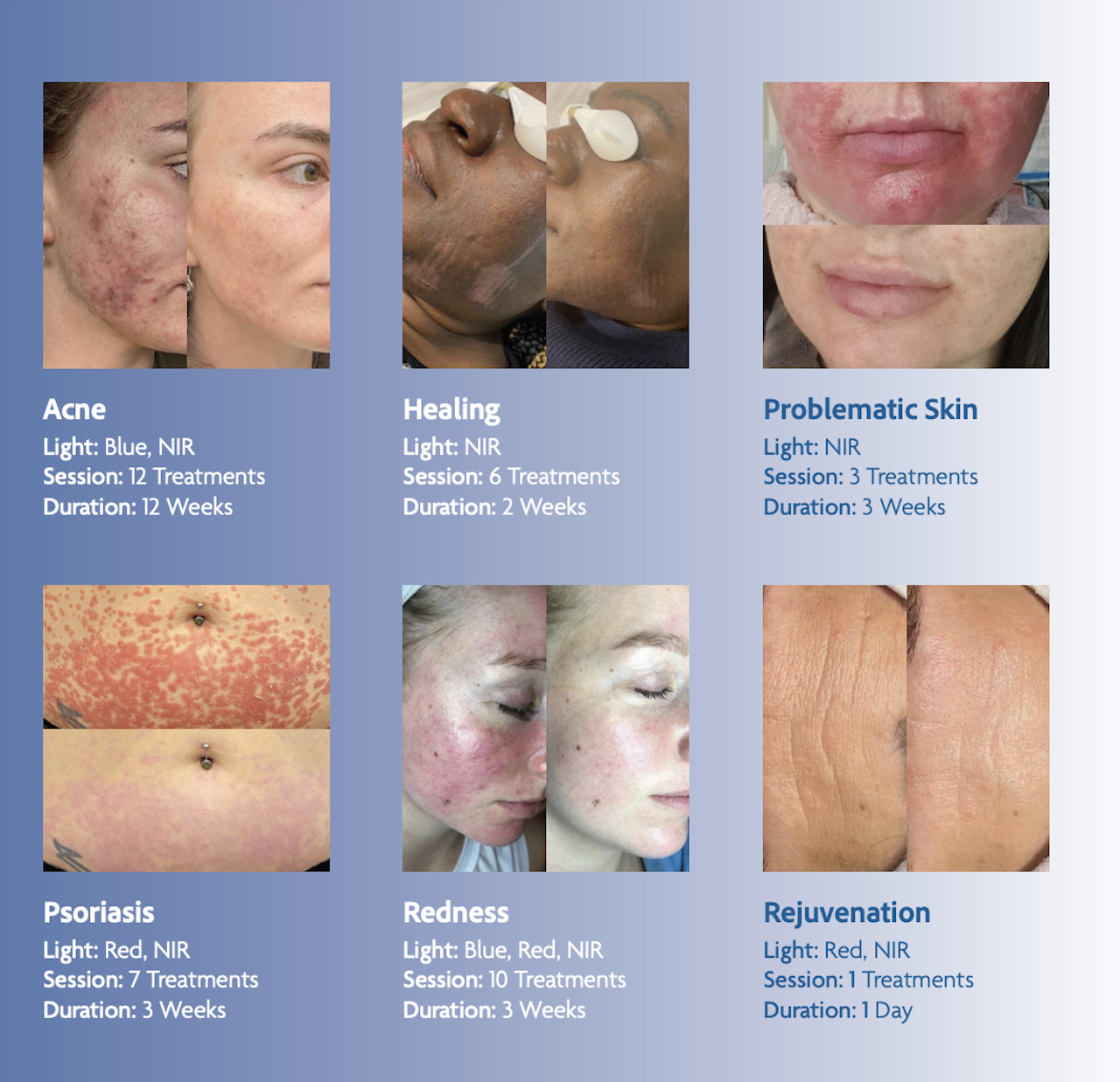Now available for the first time in Estonia – exclusively at our clinic!
This unique light therapy takes LED technology to a whole new level, delivering visibly effective results. Dermalux claims to be “light years ahead” of other LED systems, and we use the most powerful device available: the Dermalux LED Tri-Wave (240J/cm²).
Would you like healthier, more youthful-looking skin without painful procedures or long downtime?
Dermalux LED Tri-Wave phototherapy is a clinically proven, safe, and non-invasive treatment that stimulates the skin’s natural repair processes at the cellular level.
Special light wavelengths boost cellular energy, reduce inflammation, and accelerate healing. The treatment is suitable for all skin types and effectively addresses a wide range of skin concerns, including acne, redness, pigmentation, and more.
Benefits of Dermalux LED Tri-Wave Phototherapy:
- Skin rejuvenation, improved elasticity and tone
- Reduction of fine lines
- Acne treatment
- Pigmentation and sun damage correction
- Relief from psoriasis, rosacea, and redness
- Faster healing of wounds and scars
- Relief from muscle and joint pain
- Hair restoration support
This LED therapy is also ideal after aesthetic procedures (e.g., laser treatments, microneedling, chemical peels) to reduce redness and speed up recovery.
How does Dermalux LED Tri-Wave Phototherapy work?
LED phototherapy is based on photobiomodulation, the interaction between light and skin. When light at specific wavelengths penetrates the skin, it triggers natural regeneration and healing processes.
Dermalux LED Tri-Wave uses three clinically proven wavelengths:
1. Blue Light (415 nm) – Antibacterial & anti-inflammatory
- Kills acne-causing bacteria
- Reduces inflammation and sebum production
- Calms sensitive skin and prevents breakouts
2. Red Light (633 nm) – Rejuvenating & restorative
- Stimulates collagen production, improves skin elasticity
- Boosts ATP production
- Accelerates skin recovery and healing of scars
- Evens skin tone and reduces pigmentation
3. Near-Infrared (830 nm) – Deep healing
- Penetrates deeper tissues, boosts cellular metabolism
- Speeds up wound and scar healing
- Reduces inflammation, redness, muscle tension, and pain
- Enhances collagen production and improves skin structure
These wavelengths can be used individually or combined for a customized treatment.
Why choose Dermalux LED Tri-Wave?
- Safe and painless – suitable for sensitive skin
- Year-round treatment
- Backed by science
- Natural, body-compatible therapy
- No downtime
- Suitable for all skin types and easily tailored to individual needs
- Visible results after just a few sessions
- Long-lasting effects
Contraindications:
- Epilepsy or light-induced seizures
- Autoimmune diseases
- Photosensitive skin conditions
- Active cancer
- Medications that cause photosensitivity
- Metabolic disorders
Not recommended in cases of:
- Pregnancy
- Eye conditions
- Light-triggered migraines
- Recent introduction of new skincare products
- St. John’s Wort use
- Under 16 years of age
What happens during a LED phototherapy session?
- Consultation (including consent form) and treatment plan
- Skin cleansing – please arrive makeup-free if possible
- Protective goggles are applied
- LED therapy session (10–30 minutes depending on need)
- Aftercare – moisturizing the skin; restorative skincare and SPF applied if needed
How many sessions are needed?
You may notice immediate improvements in tone and texture, but optimal results develop over time with consistent sessions. We recommend a course of at least 5 sessions, 1–2 times per week.
Maintenance treatments can help prolong results. For inflammatory conditions (acne, redness, sensitivity), sessions should be spaced 24 hours apart. For general rejuvenation, treatments may be done on consecutive days.
Can LED phototherapy be combined with other treatments?
Absolutely! It enhances results, accelerates recovery, and boosts collagen and elastin production. We recommend it especially after iPRF, injectable treatments, and laser therapy.
Aftercare Instructions:
- Sun Protection: Apply broad-spectrum SPF daily and reapply as needed.
- Makeup: You can wear makeup right after your session; mineral makeup is preferred as it allows skin to breathe.
- Skincare: Continue your usual routine or follow your specialist’s guidance.
- Hydration: Drink plenty of water to keep the skin hydrated and support lymphatic function.

